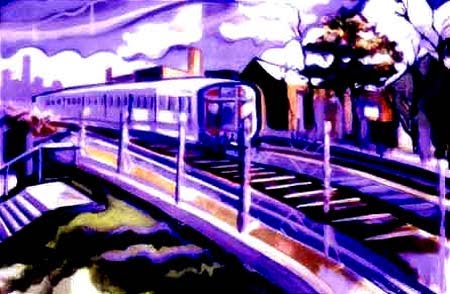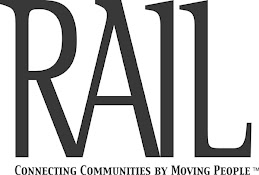 |
| Source: Amtrak |
The first and most important aspect of the proposal to consider is its price tag: $117 billion, divided into $4.7 billion annual increments over the project's 40-year horizon of development and construction. There is currently no identified source of investment at any level of government or private-sector alternative that could deliver that level of funding. Indeed, federal high-speed investment for the entire nation to-date amounts to only $13 billion – through the American Recovery and Reinvestment Act (ARRA) and the 2010 and 2010 Fiscal Year appropriations – while the most recent multi-year surface transportation, the Safe, Accountable, Flexible and Efficient Transportation Equity Act - A Legacy for Users (SAFETEA-LU) provided a total of $256.4 billion for all surface transportation modes over a six-year period. A project of this scope and magnitude would be unprecedented in the public sector.
Until the question of how such a project would attract investment is considered, the larger question of its concept and execution is largely academic. In all likelihood, only some innovative and unique blend of federal and state spending plus private-sector investment would make such an effort possible. Moreover, thus far, Amtrak has offered no options or scenarios for the realization of these funds, nor for the $52 billion required to implement the Northeast Corridor Infrastructure Master Plan. However, as Gardner noted, without the presence of a conceptual vision for what such investment would achieve, it would be impossible to build support among any constituency for such a significant funding effort.
It is almost shocking to consider that until Amtrak's announcement on Tuesday, no formal high-speed rail plan for the Northeast had ever been presented to the public. By comparison, plans for such networks in California, Florida, the Midwest and other corridors had been formulated decades ago, and work is only just ready to begin in the first of those projects – California and Florida – in the coming year. Additionally, the genesis for those plans have come from the state and regional levels and Amtrak – while supportive of, and a major participant in those plans – had not taken the lead in such a proposal. So, the railroad has done the Northeast region a substantial service in producing an initial starting point for discussion, regardless of the funding mechanisms necessary to achieve the project.
For Amtrak to position itself at the front of an effort to implement high-speed rail in the Northeast not only smartly serves its own interests, but also is the most sensible entity to initiate the discussion. The region stretching south-by-southwest from Maine to Washington, D.C. is so closely tied to the identity of Amtrak's signature asset – the existing NEC – that it's often branded with that title on matters unrelated to train travel or even transportation. This contrasts with the projects in California and Florida largely confined to a single state apparatus, and the focus of the Midwest initiative on routes centered around Chicago. Because the vital role of Amtrak in the Northeast, an high-speed effort must be informed by and integrated with the realities of the NEC, and given its role as owner and operator of that infrastructure, their involvement is paramount. Also, as the only current operator of high-speed rail service in the western hemisphere (Amtrak's Acela reaches 150 mph on a small part of the NEC), Amtrak should play an important part in sharing its experiences, operating practices and institutional knowledge of the mode, especially when it's positioned in its backyard.
Beyond the a priori fiscal, governmental and political considerations of the proposal as described above, there is much to be excited about in Amtrak's plan. It envisions the establishment of a true high-speed rail corridor between Boston, Mass., and Washington via New York, N.Y. that makes service at speeds up to 220 mph possible and average speeds close to 150 mph. Most impressively, the new infrastructure would make possible trips between Boston and New York in 1 hour and 36 minutes and between New York and Washington in 1 hour and 23 minutes. The entire corridor could be traversed in 3 hours and 23 minutes on express trains only stopping at New York's Penn and Grand Central stations.
If such a route was established, it would compete with those in Europe and Asia as the most beneficial and profitable in the world. Amtrak estimates the project would return at least $2 for every $1 in investment over the corridor's century-plus lifetime through increased economic development, property values, economic productivity, energy use, environmental benefits and regional connectivity, presenting the opportunity to realize more than $230 billion in returned investment over time. Moreover, the high-speed service would generate significant operating revenues, to the tune of nearly $1 billion each year. To this end, Gardner noted on several occasions that their revenue projections conservatively assumed current economic conditions, such as demand for travel along the corridor, current fuel prices and population projections. Should any of these dynamics change in favor of rail travel – say fuel prices at $5 or $6 – the service's profits would only grow. No other high-speed rail project in the western hemisphere offers such positive revenue forecasts, and such profitability may be a tool to attract private investment in the project's capital infrastructure in exchange for concessions on future revenues.
The plain aims to achieve this level of service by constructing entirely new high-speed tracks in the corridor that would be exclusively dedicated to high-speed trains like the Acela. Gardner was careful to point out that although their vision considered several potential alignments for both the Boston to New York and New York to Washington segments, the document was not an in-depth engineering nor environmental study, and future planning work would be necessary to select the exact routes and infrastructure options. However, based on the preliminary alignments investigated in Tuesday's report (see map at top), the new tracks would roughly reside alongside the current NEC rails from between New York and Washington, except for new tunnels through Philadelphia, Pa. and Baltimore, Md., and new structures near Wilmington, Del. Meanwhile, north of Manhattan, a largely entirely new railroad would be built from New Rochelle, N.Y. to near Route 128 outside of Boston, stretching through northern Connecticut and Rhode Island to serve the Connecticut cities of Danbury, Waterbury and Hartford along with Woonsocket, R.I. The route would be a northerly departure from the current NEC shoreline route through New Haven and Providence, R.I., and essentially create two parallel high-speed lines through New England through the combination of the new tracks and the current NEC. Additionally, a new tunnel under Manhattan would link Penn and Grand Central stations for the first time.
 |
| Source: Amtrak |
Amtrak's vision for a new approach to high-speed rail in the Northeast is an important first step in a process that could revolutionize the region for more than a century. The lack of investment scenarios for the effort is concerning and potentially fatal, although hardly Amtrak's fault. As Gardner himself noted, the project will only be realized if the region – and potentially the nation – devotes its collective and political will to the endeavor. Public officials and concerned citizens should take a long look at the compelling ideas and underlying justifications presented in Amtrak's vision. Few opportunities exist today that could so significantly and positively impact a large number of people, boost our economy and improve our quality of life. Reasonable people can have valuable discussions and rational disagreements over whether the risk inherent in the upfront investment necessary is worthy of the potential benefits. But those discussions can and must occur, and Amtrak should receive credit for setting the stage for such a dialogue to take place.

































